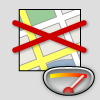简介
地点照片(新)服务是一个只读 API,可让您向应用添加高品质的照片内容。借助地点照片(新),您可以访问存储在地点数据库中的数百万张照片。
当您使用“地点详情(新)”“附近搜索(新)”或“文本搜索(新)”请求获取地点信息时,还可以请求相关照片内容的照片资源。使用 Place Photos(新),您可以访问所引用的照片,并根据自己的应用将图片调整为最适合的大小。
借助 API Explorer,您可以发出实时请求,以便熟悉 API 和 API 选项:
“地点照片”(新)请求
Place Photos (New) 请求是向以下格式的网址发出的 HTTP GET 请求:https://places.googleapis.com/v1/NAME/media?key=API_KEY&PARAMETERS
其中,以下参数为必需参数:
- NAME 包含照片的资源名称。
- API_KEY 包含 API 密钥。
- PARAMETERS 包含
maxHeightPx参数、maxWidthPx参数或两者兼有。
下文介绍了必需参数和可选参数的完整列表。
必需参数
照片名称
唯一标识照片的字符串标识符。照片名称通过 地点详情(新)、附近搜索(新)或文本搜索(新)
请求返回,位于 photos[] 数组中每个元素的 name 属性中。
如需查看示例,请参阅获取照片名称。
maxHeightPx 和 maxWidthPx
指定图片的最大预期高度和宽度(以像素为单位)。如果图片小于指定值,则返回原始图片。如果图片在任一维度上更大,系统会将其缩放为与较小的维度匹配,但会限制为原始宽高比。maxheight 和 maxwidth 属性均接受介于 1 到 4800 之间的整数。
您必须指定 maxHeightPx 和/或 maxWidthPx。
可选参数
skipHttpRedirect
如果值为 false(默认值),则向图片发出 HTTP 重定向,以返回图片。
如果值为 true,则跳过重定向并返回包含图片详细信息的 JSON 响应。
例如:
{ "name": "places/ChIJj61dQgK6j4AR4GeTYWZsKWw/photos/Aaw_FcKly0DEv3EWmDJyHiEqXIP5mowOc99lN1GzBun6KHH52AZ5fFA/media", "photoUri": "https://lh3.googleusercontent.com/a-/AD_cFT-b=s100-p-k-no-mo" }
对于非 HTTP 请求,此选项会被忽略。
获取照片名称
对 Place Photos(新)的所有请求都必须包含照片资源名称,该名称在对“附近搜索(新)”“文本搜索(新)”或“地点详情(新)”请求的响应中返回。如果相应地点有相关的照片内容,则对这些请求的响应会包含一个 photos[] 数组。
photo[] 的每个元素都包含以下字段:
name- 在执行照片请求时,包含照片资源名称的字符串。此字符串的格式如下:places/PLACE_ID/photos/PHOTO_RESOURCE
heightPx- 图片的最大高度(以像素为单位)。widthPx- 图片的最大宽度(以像素为单位)。authorAttributions[]- 任何必需的署名信息。此字段始终存在,但可能为空。
Place Photos (New) 返回的照片来自各种位置,包括商家和用户贡献的照片。在大多数情况下,使用这些照片时可以不包含提供方说明,或者可以在图片中显示必要的提供方说明。但是,如果返回的 photo 元素在 authorAttributions 字段中包含值,无论您在哪里显示相应图片,都要在应用中包含额外的提供方说明。
以下示例展示了一个包含字段掩码中 photos 的“地点详情(新)”请求,以便响应中包含 photos[] 数组:
curl -X GET \ -H 'Content-Type: application/json' -H "X-Goog-Api-Key: API_KEY" \ -H "X-Goog-FieldMask: id,displayName,photos" \ https://places.googleapis.com/v1/places/ChIJ2fzCmcW7j4AR2JzfXBBoh6E
photos[] 数组。
... "photos" : [ { "name": "places/ChIJ2fzCmcW7j4AR2JzfXBBoh6E/photos/AUacShh3_Dd8yvV2JZMtNjjbbSbFhSv-0VmUN-uasQ2Oj00XB63irPTks0-A_1rMNfdTunoOVZfVOExRRBNrupUf8TY4Kw5iQNQgf2rwcaM8hXNQg7KDyvMR5B-HzoCE1mwy2ba9yxvmtiJrdV-xBgO8c5iJL65BCd0slyI1", "widthPx": 6000, "heightPx": 4000, "authorAttributions": [ { "displayName": "John Smith", "uri": "//maps.google.com/maps/contrib/101563", "photoUri": "//lh3.googleusercontent.com/a-/AD_cFT-b=s100-p-k-no-mo" } ] }, ...
请求地点照片
以下示例请求使用资源 name 返回一张图片,并调整其大小,使其高度和宽度不超过 400 像素:
https://places.googleapis.com/v1/places/ChIJ2fzCmcW7j4AR2JzfXBBoh6E/photos/ATKogpeivkIjQ1FT7QmbeT33nBSwqLhdPvIWHfrG1WfmgrFjeZYpS_Ls7c7rj8jejN9QGzlx4GoAH0atSvUzATDrgrZic_tTEJdeITdWL-oG3TWi5HqZoLozrjTaxoAIxmROHfV5KXVcLeTdCC6kmZExSy0CLVIG3lAPIgmvUiewNf-ZHYE4-jXYwPQpWHJgqVosvZJ6KWEgowEA-qRAzNTu9VH6BPFqHakGQ7EqBAeYOiU8Dh-xIQC8FcBJiTi0xB4tr-MYXUaF0p_AqzAhJcDE6FAgLqG1s7EsME0o36w2nDRHA-IuoISBC3SIahINE3Xwq2FzEZE6TpNTFVfgTpdPhV8CGLeqrauHn2I6ePm-2hA8-87aO7aClXKJJVzlQ1dc_JuHz6Ks07d2gglw-ZQ3ibCTF5lMtCF9O-9JHyRQXsfuXw/media?maxHeightPx=400&maxWidthPx=400&key=API_KEY
成功的 Place Photos (New) 请求的响应是一张图片。
错误代码
“地点照片(新)”请求可能会返回以下错误代码。
超出配额 (403)
如果您的请求超出可用配额,服务器会返回 HTTP 403 状态,并显示以下图片,指明配额已超出:

请求无效 (404)
如果服务器无法理解您的请求,则会返回 HTTP 400 状态,表示请求无效。无效请求最常见的原因包括:
- 提交的照片名称未正确指定。
- 请求未包含
maxHeightPx或maxWidthPx参数。 maxHeightPx或maxWidthtPx参数的值已设置为null。name已过期。如果name过期,请向地点详情(新)、附近搜索(新)或文本搜索(新)发出请求,以获取新的name。
请求次数过多 (429)
Google 建议按需加载照片。如果您尝试一次性显示某个地点的所有图片,服务器可能会返回 HTTP 429 状态,表明同时加载的照片过多。如果您收到此错误消息,请与支持团队联系,并申请增加配额。
试试看!
借助 API Explorer,您可以发出示例请求,以便熟悉 API 和 API 选项。
如需提出要求,请执行以下操作:
- 选择页面右侧的 API 图标 。
- 将
name参数设置为:places/PLACE_ID/photos/PHOTO_RESOURCE/media - 将
skipHttpRedirect设置为true,以便请求返回 JSON 响应。默认情况下,请求会返回 API Explorer 无法显示的图片。 - 选择执行按钮。在对话框中,选择您要用于提出请求的账号。
-
在 API 浏览器面板中,选择全屏图标 以展开 API 浏览器窗口。

